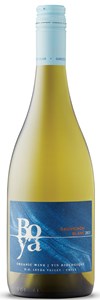Terre Beau Winery

Terre Beau Winery
100 South Lynn
Dover, Missouri
USA 64022
Phone: (660) 259-3010
http://www.terrebeauvineyards.com/
Contact: John Tulipana
Email: [email protected]
The building that houses Terre Beau Winery is over 150 years old, and stands today near the center of the small village of Dover, attractive and well-kept. The building was erected in 1858 as a place of worship for the Presbyterians. It was built of brick, rectangular in shape with the entrance facing east. The tall, slender steeple was set into the gable roof at the front of the building. Two windows flanked the entrance vestibule, which had a high gable roof, extended about four feet from the main building and was ten feet wide with double entrance doors. About the vestibule roof and directly below the steeple was a round window. There was also a round window high on each side of the building and a small window below. These windows lighted the stairs to the gallery where the slavbes gathered for church service.
Five tall windows were evenly spaced on each side of the building. These windows were very tall with twelve 9 inchby 27 inch panes of clear glass in the lower half ; six 9 inch by 27 inch panes in the upper half, on top of which were five panes placed fan-wise around a center pane forming a semi-circular top to the window. When the c hurch was built the grounds contained a barn, a lean-to with plenty of hitching space and the 'necessary' out buildings. During the Civil War the Federal Army rounded up Confederate sympathizers from Dover and the surrounding area and held them prisoner in the Church until they could be transported to the Federal Courty House in Lexington. The tall steeple of the Church was struck by a cannon ball fired from a river boat. Several unknown Confederate soldiers are said to be buried behind the church.
By 1900 the Presbyterian congregation had diminished, a natural result since dwindling population had reduced Dover from town status to that of a village. In 1904 the Catholic Diocese of Kansas City purchased the church and grounds from the Presbyterians and established the Catholic parish of St. John the Baptist. The building suited the Catholics in many ways but a few changes were made. The tall, slender steeple was lowered and a cross was placed at the top. The gallery where the salves had gahtered for Presbytrian services became the choir area for the Catholics. The steps, which led to the balcony on the north side, were taken out and the space enclosed for Confessionals. The steps on the south side were retained as access to the choir left. Pews were arranged so that there would be aisle down each side next to the outer walls, as well as down the center.
The Presbyterians had used the entire length of the building as their sanctuary with space at the south end for the pulpit. The Catholics needed a wider space to accommodate a beautifully designed white marble altar, which they purchased from a company in the east and had shipped by rail to the Dover station. ( The chapel know sets in the church of Immaculate Conception in Lexington, Missouri.) On each side of the widened altar space two small rooms were enclosed for sacramentals and vestments, thus eliminating from the main part of the church two tall windows on each side. This also provided room on the sanctuary side for two side altars for the statues of Mary and Joseph.
One thing remained to be done before the Catholics would be completely satisfied with their church and that was to replace the tall clear glass windows with leaded, stained glass. ( These stained glass windows are know a part of the parish in Richmon, Missouri.) Since two of the ten tall windows were in the two Sacristy rooms they needed to replace only the four windows on each side of the sanctuary. Four families each donated the cost of a window and their names are in the stained glass at the bottom of these donated windows. The parish stood the cost of the other four window, which have no names. These windows were purchased from a company in the east , shipped by rail to the Higginsville station, and brought by horse and wagon the ten miles to Dover. They are not plain stained glass, nor are the elaborately decorated; but are beautiful in simplicity of design, color and symbolism.
When Bishop Lillis dedicated St. John the Baptist church in 1904 it was considered a Mission Church. A priest came by horse and buggy from Higginsville two Sundays each month to offer Mass.
In the 1930's the parish was told that a resident priest would be sent if they would provide housing for him. Living quarters consisting of : two bedrooms, kitchen and small living room were built on to the rear of the chruch, and a succession of resident priests followed. Those who had housekeepers or who liked to do their own housekeeping, lived comfortably in the rooms at the rear of the church. If they had no housekeeper and did not care to "batch" they lived at the priest's residence in Higginsville and drove to Dover for Sunday Mass and other parish activities.
In 1950 the parish completely redecorated the interior of the church. Panelling in soft brown and beige covered the century old walls and ceiling. The church was rewired and new lighting installed. The side altars were removed and small statures of Mary and Joseph were placed in the alcoves recessed in the wall. New floor covering for the altar and down the center aisle and a new wood altar rail completed the remodeling.
Winemaker: John Tulipana
Update Winery information Submit new wines to be posted Wineries of America
Although there aren't any wines associated with this winery, Natalie may have reviewed brands that this winery produces and she just didn't know to designate this winery in her tasting note. You can search here for specific brands.
 Best Books of the Year
Best Books of the Year Best Books of the Year
Best Books of the Year

















